Our joints are truly amazing, and for most of our lives, they function flawlessly. Except when they don't. There are diseases, such as arthritis, that can disrupt their function (and I know this from personal experience), but more commonly, there is "overdoing it". Overuse is the generic label we put on it when we don't know exactly why the joint stopped functioning properly and started hurting. Our entire mission at Vimazi is to understand how running can lead to overuse in joints and how shoes can change that. What follows below is not a medical discussion involving chemistry and cellular biology, it's a mechanics of motion explanation. Since this is intended for a general audience, I'll try to keep the math to a minimum.
SEE OUR WOMEN'S SHOES | SEE OUR MEN'S SHOES
Joint mechanics is getting the formulas for how quickly, over what range, and in what direction, each joint moves while running or walking. Our two legs, each with its four major joints (hips, knees, ankles, balls-of-feet), alternate back and forth to do move us about in three dimensions. It may seem overwhelmingly complex, not to mention impossible to account for all the individual differences between people, but it's not. It comes down to two basic things: how the speed of a joint motion changes over its range of motion, and how the arrangement of joints in the leg (i.e. hips to feet) determines the frequency of the motion.
The speed of a joint motion from the moment it starts to open or close to the moment it stops and then reverses direction, looks like a bell curve: it increases to a maximum and then slows back to a stop. That's it. How quickly it does this, and therefore how much force and energy are involved, depends on your cadence and speed. The math for a motion is precise (it's called a raised cosine), but don't worry about that for now. The second crucial thing is what happens when you connect joints in a series starting at the hips and ending at the ground. What happens is that each joint goes back and forth an additional time as compared to the joint above it for each stride. We call that the frequency. So knees go back and forth twice for every one hip motion; ankles move three times; foot joints move four times. The effect of each joint goes down as you move down the leg, because there is less mass below each joint as you reach the tip of the toes.
So, how does any of this help to understand impact forces and knee or heel pain? Easy; we know how a tendon has to stretch in order for joints to move back and forth. From things like your body weight and how fast you are running, we can calculate how much stress and strain are experienced in the tendons of each joint. That means we can say what your tendons experience as you run faster, change your cadence, run downhill, etc. And we know that too much stress may eventually lead to tendon damage (i.e. injury). The same applies to other connective tissues and cartilage. I'm intentionally glossing over some details to make the main point: stress on your body is directly determined by your joint anatomy and how quickly you move them.
We can convert all of this into the measurements made in a lab. The first graph below shows the horizontal forces (forward and back directions) for each set of joints and their combined effect (sum). The combined effect is what we measure under the foot and is called the Ground Reaction Force (GRF) profile. Altogether, the forces form a wave packet.

Performing the calculations in the vertical and lateral (side-to-side) directions creates GRF graphs directly comparable to any published data set. These graphs show the forces that can be measured.


The point here is to demonstrate that we figured out the physics formulas so that we can use them to get at what really matters: the sharp stresses (called Jerk) on your joints. Jerk is exactly what it sounds like: a rapid change in force. It's the jerk that can do the damage, so it's the jerk we want to reduce by properly designing a shoe. I call it "stress", because that's what it feels like.
Vimazi's Solution. With the goal of reducing stress, we use what we know about the causes of the stresses to engineer the midsole to respond so as to minimize the stress. The photo below is a Vimazi midsole showing the firmer density insert in the forefoot. What you can't see is exactly what the firmness is. But you can feel it.

As pace increases, so do the horizontal stresses. That is why we tune the midsole firmness to be firmer for faster paces.




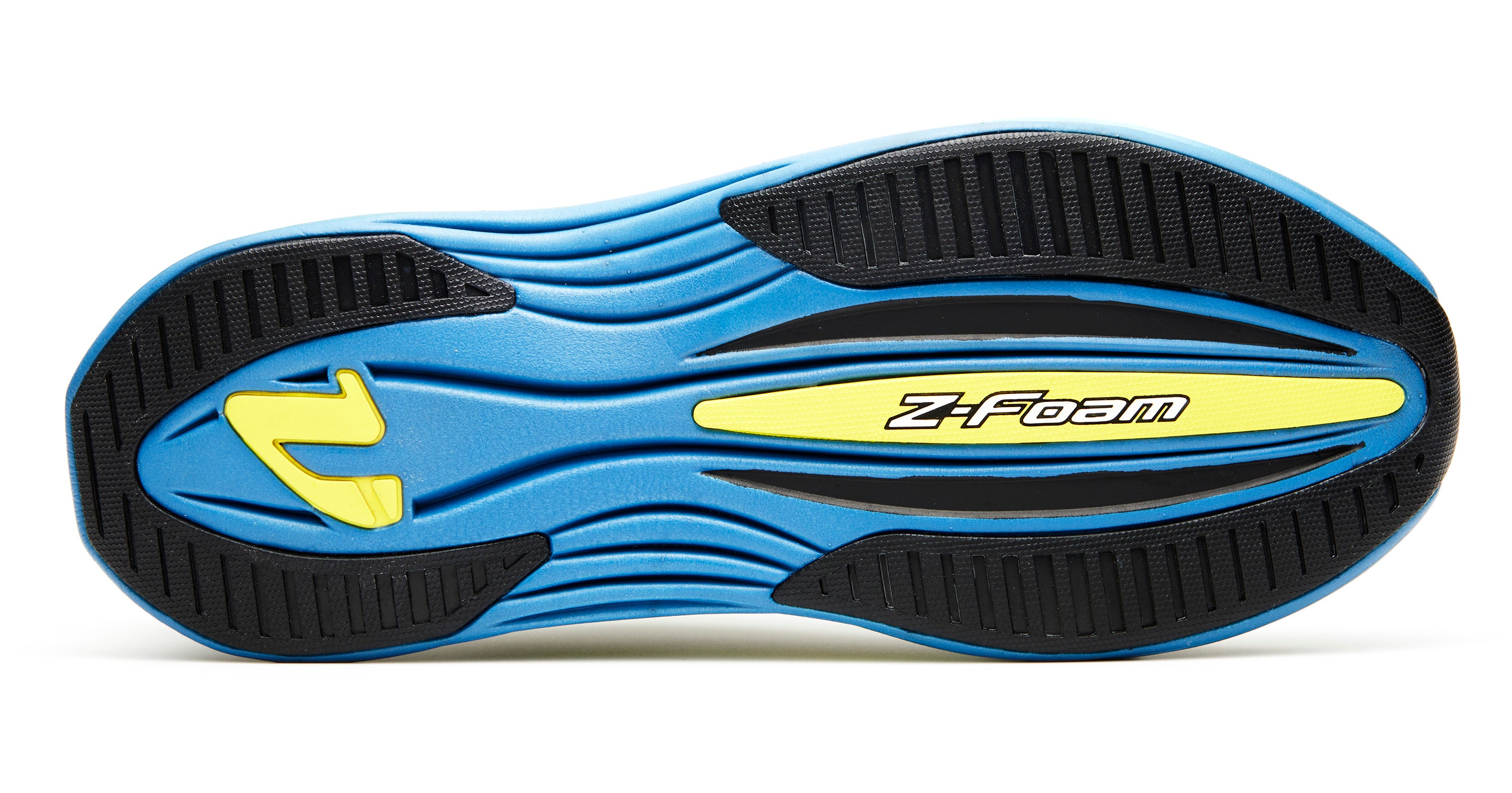
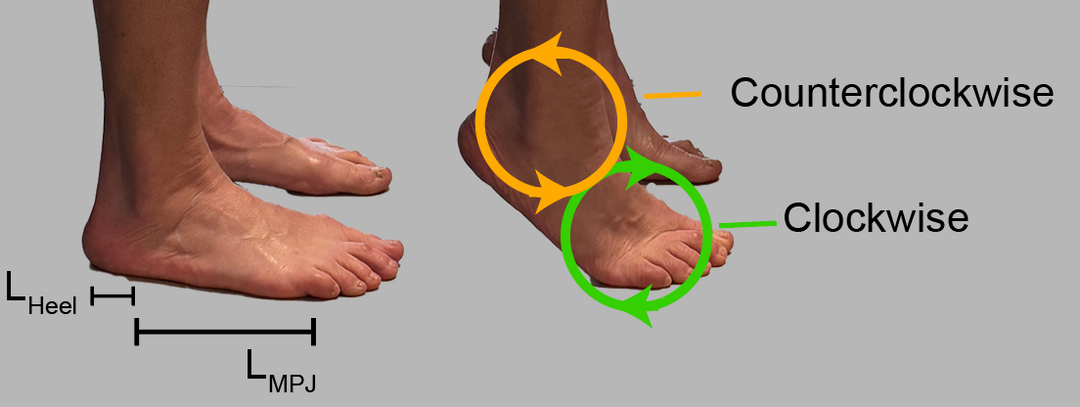
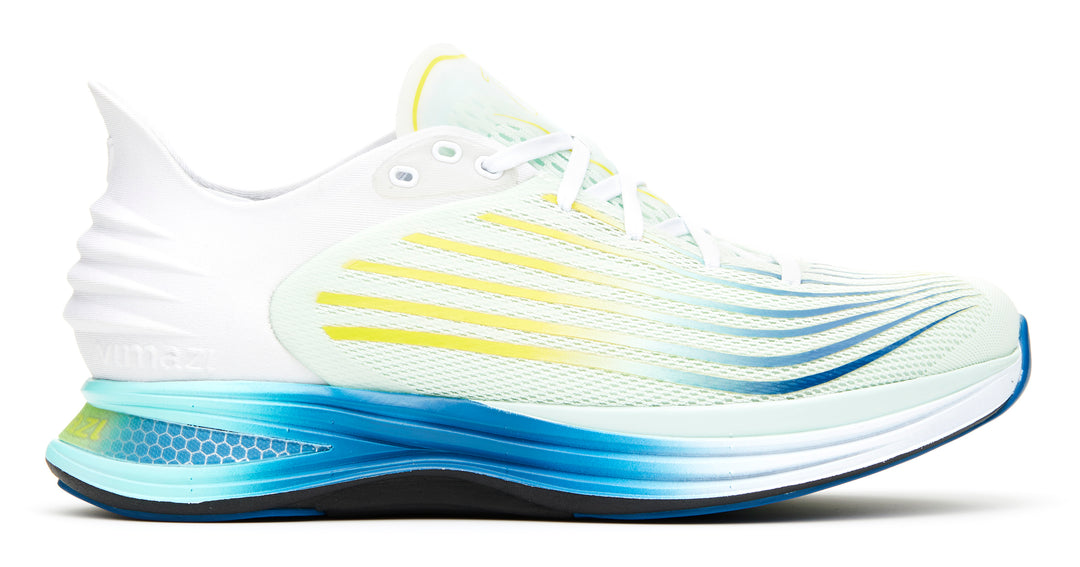
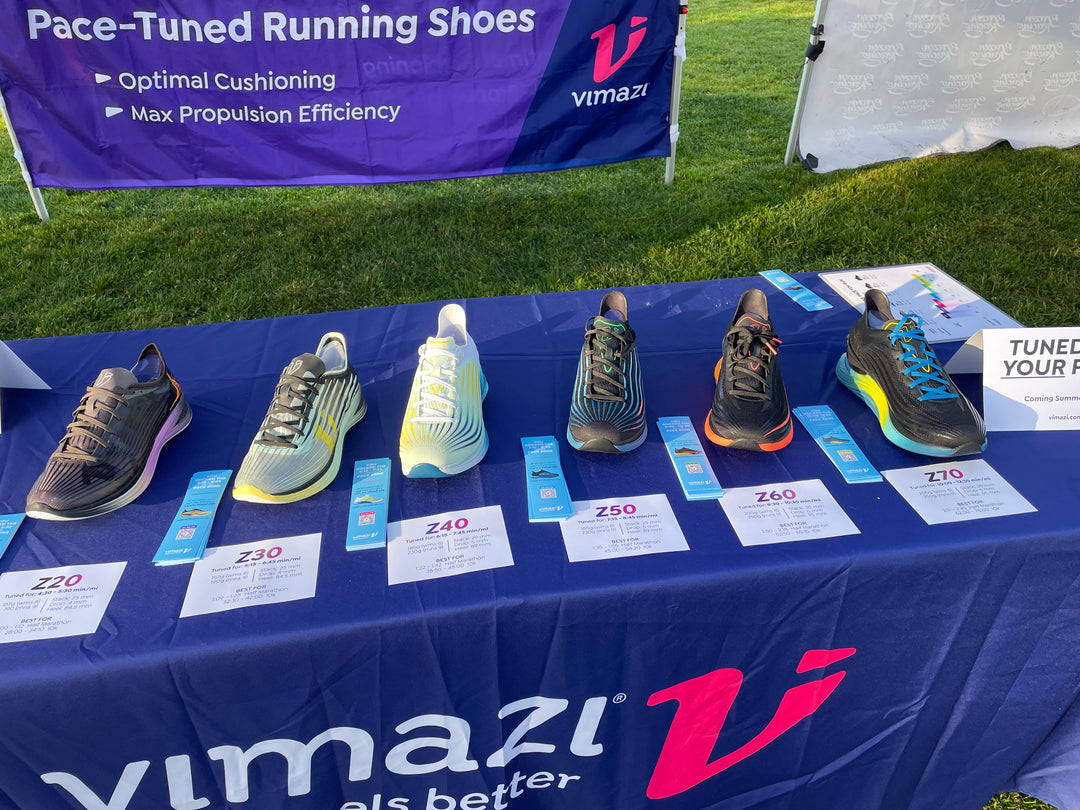
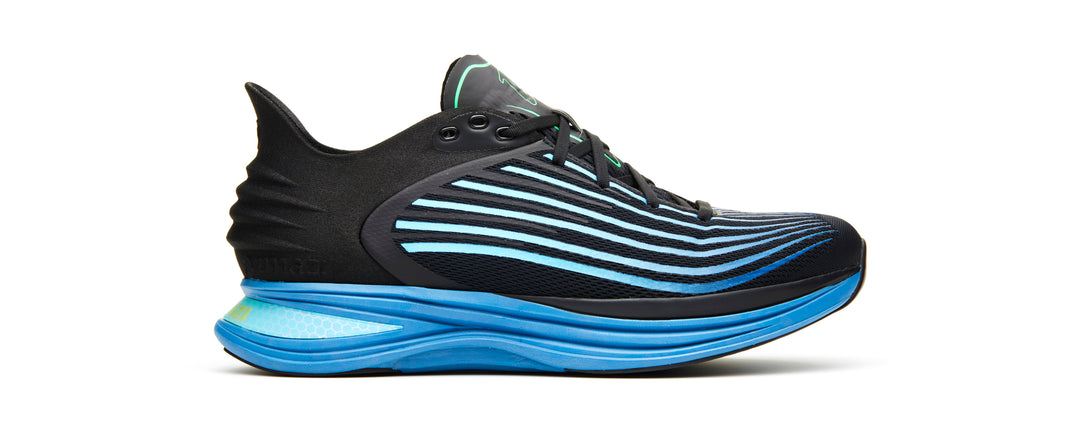
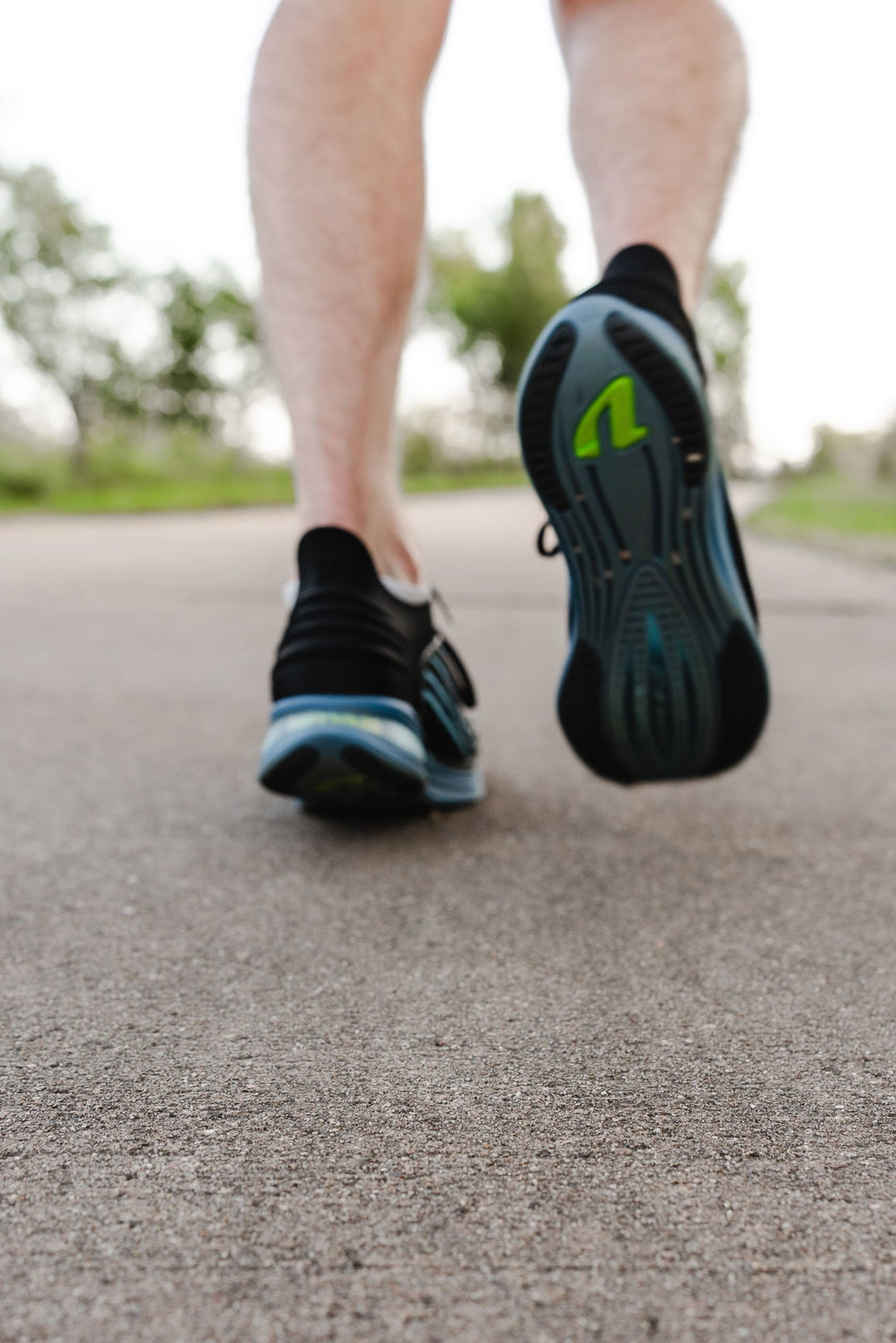
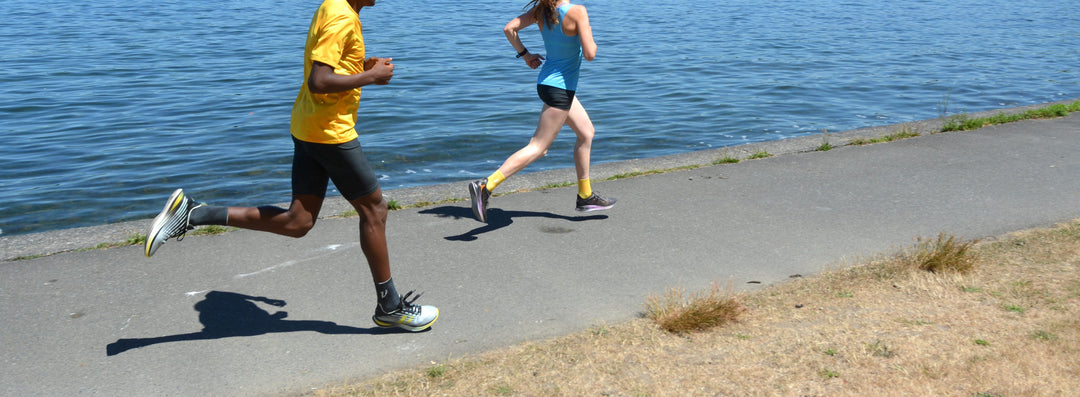
Leave a comment